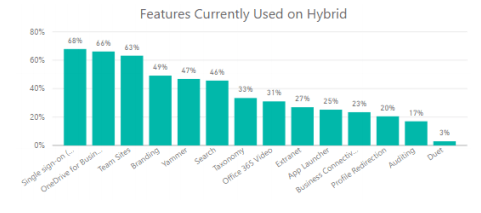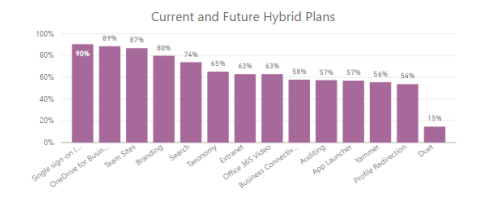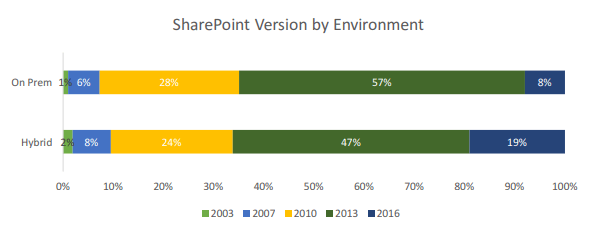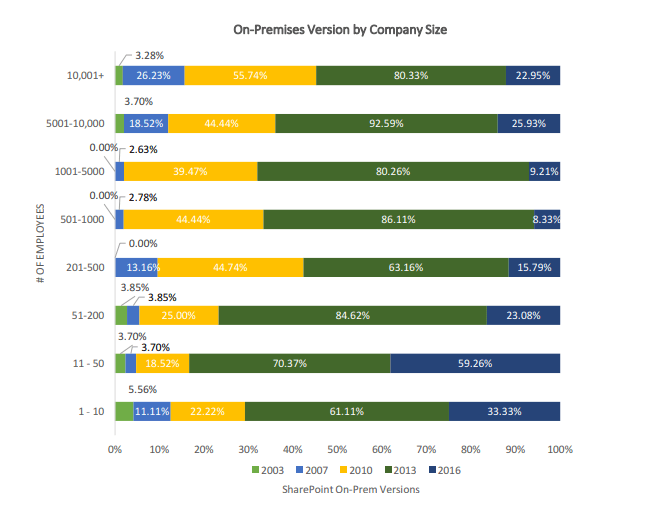Editor’s Note: This post is part of our series on SharePoint Deployment and is based on the AvePoint-sponsored research paper “Understanding the State of the Hybrid SharePoint Ecosystem.” You can check out the first blog post in the series here.
Uses of SharePoint
SharePoint is an effective collaboration platform for businesses around the world. What exactly causes organizations to adopt it so rapidly, though? Our survey found that the most commonly cited reasons for adopting and using the platform were:
- Collaboration
- Document Management
- Document Sharing
- Intranet Services
In addition, the most common reasons for moving to SharePoint Online are:
- “It was aligned with our company strategy” (54%)
- “It was the most cost effective option.” (49%)
- “It was the best technical option for our business.” (45%)
- “It is where the market is going.” (43%)
- “It was the only available option to leverage the latest features.” (22%)
- “It offers a higher level of security than what we can provide on-premises.” (19%)

While determining causes for migration is critical, it’s also important to uncover which SharePoint tools and features are being implemented. The most popular features in a hybrid solution are currently (in terms of percentage of respondents):
- Single Sign-On (68%)
- OneDrive for Business (66%)
- Team Sites (63%)
Meanwhile, the least popular features are:
- Profile redirection (20%)
- Auditing (17%)
- Duet (3%)

Auditing, Extranet and Branding are expected to grow the most (by 40%, 36%, and 31%, respectively). The least amount of growth is expected from Yammer (9%) and Duet (12%).
Reports from SolarWinds also gave us valuable global insights into the areas of IT infrastructure that companies have already migrated to the cloud. These stats are based on % of respondents:
- Applications (North America: 69%, Germany: 70%, UK: 72%, Australia: 71%)
- Storage (North America: 49%, Germany: 46%, UK: 40%, Australia: 40%)
- Databases (North America: 33%, Germany: 30%, UK: 27%, Australia: 31%)
- Security (Testing SaaS) (North America: 15%, Germany: 10%, UK: 17%, Australia: 12%)
- Other (North America: 10%, Germany: 12%, UK: 16%, Australia: 20%)
- None (North America: 5%, Germany: 6%, UK: 3%, Australia: 3%)

Versions of SharePoint
It’s natural to assume that the majority of the market will shift when new versions of software come out. That isn’t necessarily what happened with SharePoint, though. Our numbers show that, surprisingly, about 49% of the market is still using SharePoint 2013 compared to the 13% who’ve migrated to 2016.
Interestingly, our data also shows that companies running in a hybrid environment are more likely to be using the latest version. Some other interesting tidbits are:
- Larger companies tend to rely on older versions of the software, while 51-200-employee companies lean more heavily towards SharePoint 2016 and 2013
- Over 30% of companies using SharePoint On-Premises are using more than one version of SharePoint
- 37% of companies using Hybrid use 2 or more versions of SharePoint
- According to 25+ organization interviews, using multiple versions seems to stem from companies having trouble migrating large amounts of on-premises development
- Thus, they are unable to completely leave older versions behind


Being forced to support older versions of the software further complicates migration efforts. Working in multiple versions of SharePoint always makes transitioning to newer versions more difficult (especially when moving to a total SharePoint Online solution).
Are you tired of being held back by your on-premises development? Learn how you can successfully migrate your data with our special DocAve Migrators tools.
We also wanted to understand the solutions that companies might use going forward. Our findings revealed that:
- Those predominantly using SharePoint 2003 are more likely to stick to staying on-premises than those using more current versions
- 58-70% of companies using on-premises versions between 2007 and 2016 report that they plan on moving to a hybrid solution
- Hybrid seems to be a growing trend overall
Hungry for more on the Office 365 family of software? Click here to subscribe to our blog!

